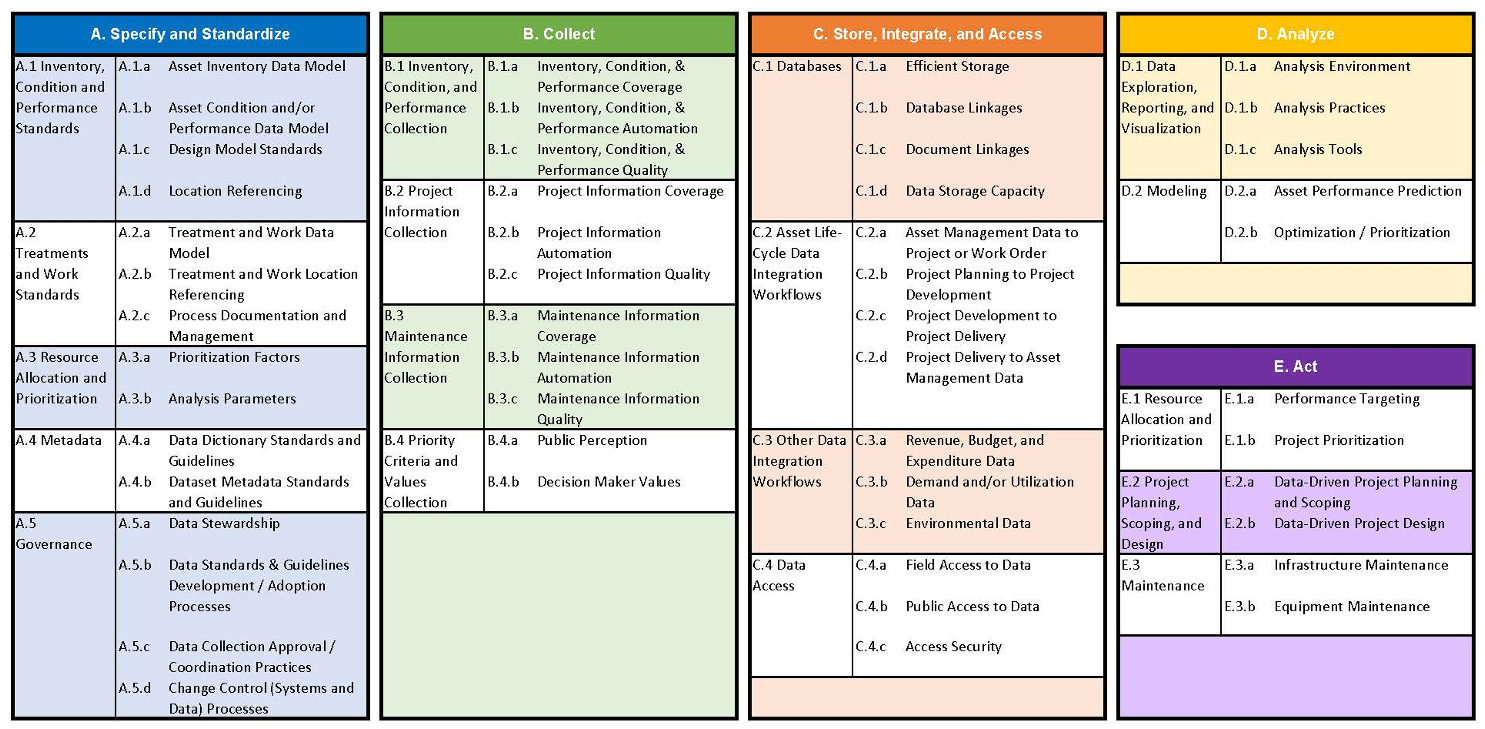Framework Exploration
The data life-cycle framework comprises five steps, outlined in each of the five Areas.
Area A – Specify and Standardize Data
Supports the understanding of the needs and full costs of asset inventory, condition and performance, treatment, and work history data. Also addresses the documentation of data meaning, derivation, and quality, and the establishment of governance structures and processes and stewardship roles and responsibilities.
See Area A
See Area A
Area B – Collect Data
Explores TAM related data collection processes, tools and technologies, and quality as delivered with respect to existing data standards.
See Area B
See Area B
Area C – Store, Integrate, and Access Data
Addresses data availability across the enterprise and the elimination of redundant and duplicative data. Specific asset life-cycle process areas are identified for data standardization and integration, as well as other data and process areas important to TAM decision-making.
See Area C
See Area C
Area D – Analyze Data
Examines decision-support tools, techniques, and practices that facilitate development of actionable information and insights supporting decision-making. Data exploration, reporting, visualization, and asset modeling are a focus within this Area.
See Area D
See Area D
Area E – Act Informed by Data
Covers data-informed TAM practices, exploring asset life-cycle management through resource allocation and prioritization, project planning, scoping, and design, and maintenance decision-making.
See Area E
See Area E

